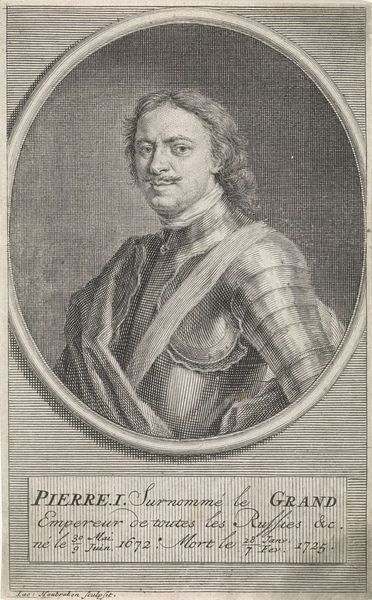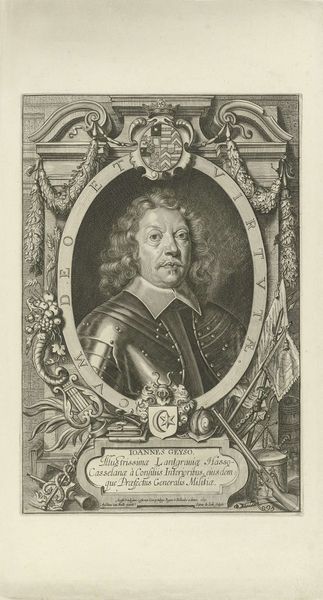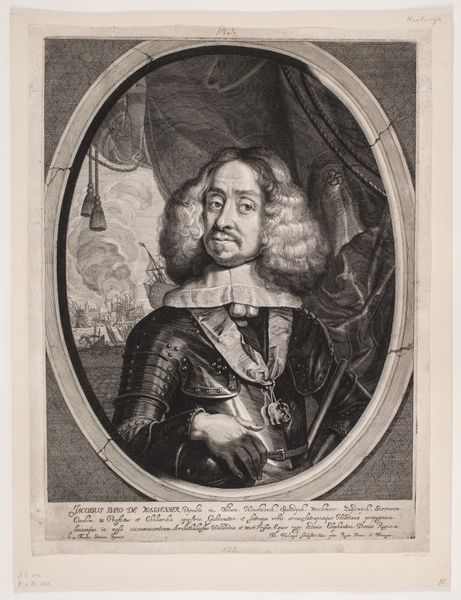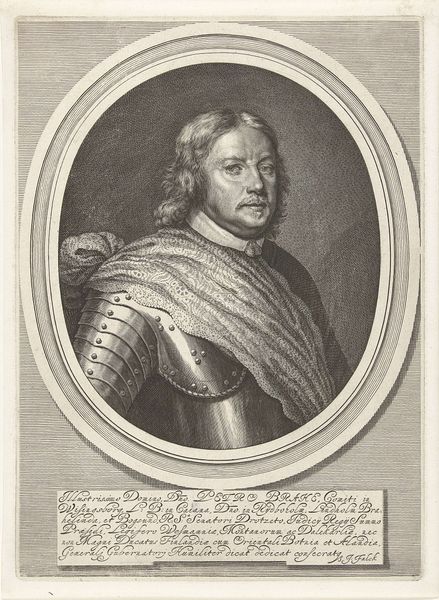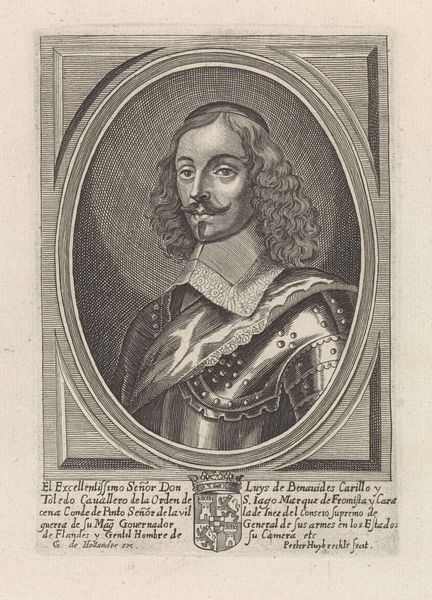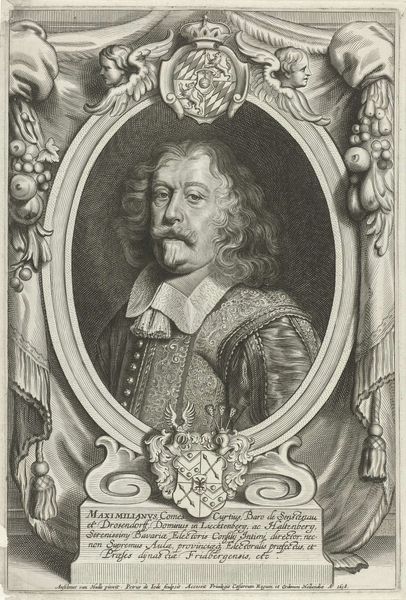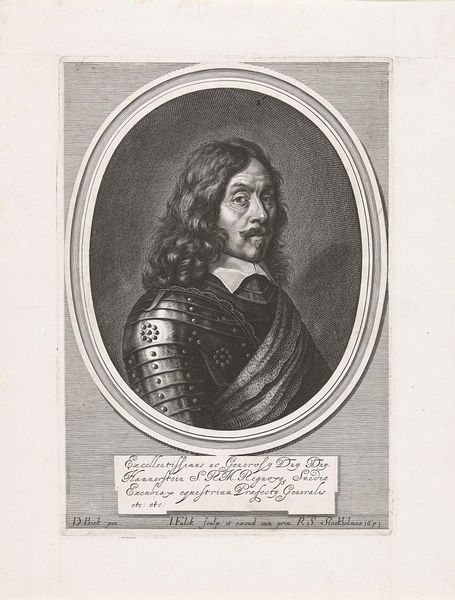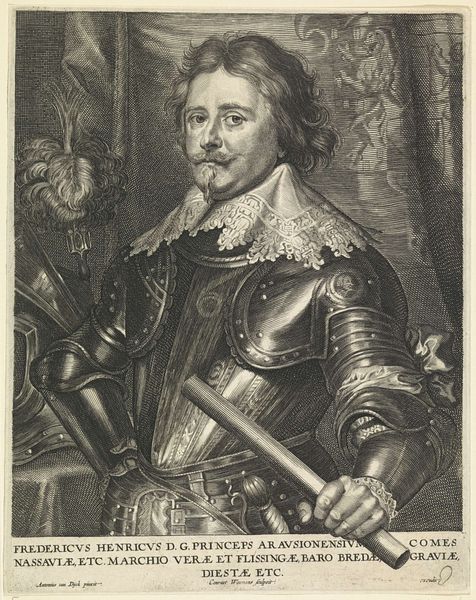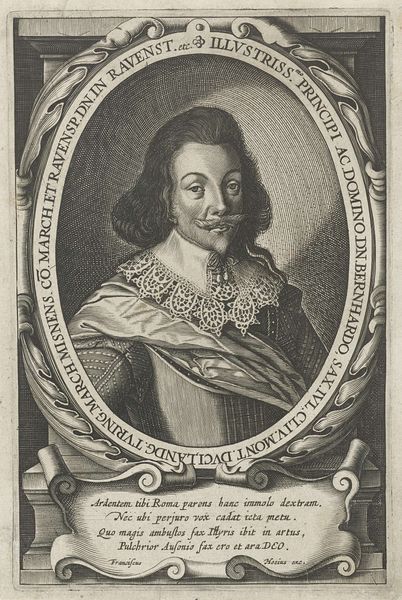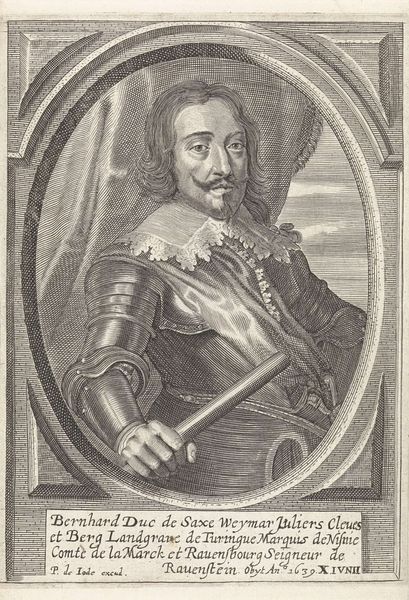
print, engraving
#
portrait
#
baroque
# print
#
old engraving style
#
history-painting
#
engraving
Dimensions: height 560 mm, width 414 mm
Copyright: Rijks Museum: Open Domain
Editor: This engraving by Jacob Houbraken, "Portrait of Peter I the Great, Tsar of Russia," made sometime between 1725 and 1780, strikes me as a potent image of power. What do you see in this work from a historical perspective? Curator: I see a carefully constructed image designed to reinforce Peter the Great's authority. The use of engraving as a medium is significant, mass producing his image and disseminating it across geographic boundaries and throughout social strata. Notice how the baroque ornamentation reinforces the grandeur and supposed legitimacy of his rule, particularly in a period defined by Enlightenment thinking. Who was the target audience here, and how would this impact meaning? Editor: Presumably, the engraving circulated among the European elite, who already possessed portraits of nobility and Royalty and similar imagery but perhaps lacked images of this specific political figure? Curator: Precisely. Its purpose wasn’t just commemorative, but declarative. It’s saying, "Here is Peter, a ruler of equivalent stature and divine right to those you already recognize.” The armor is significant too, right? More than mere protection, how does the artifice contribute? Editor: Right. It's less about practicality and more about conveying martial strength, associating Peter with military might and conquest. And the dramatic curtain framing the portrait, as if he’s an actor on the world stage? Curator: Exactly! These visual elements all combine to construct a very specific narrative about Peter and his place in the European power structure. How different this image likely was, say, from ones circulated domestically in Russia? Consider what the imagery would emphasize, depending on location and circulation. Editor: This really clarifies how much a portrait like this could be active in shaping political perceptions! Thanks for sharing your insights. Curator: And thank you. Thinking about the context in which images are made, distributed, and viewed is vital for any historical study.
Comments
No comments
Be the first to comment and join the conversation on the ultimate creative platform.

